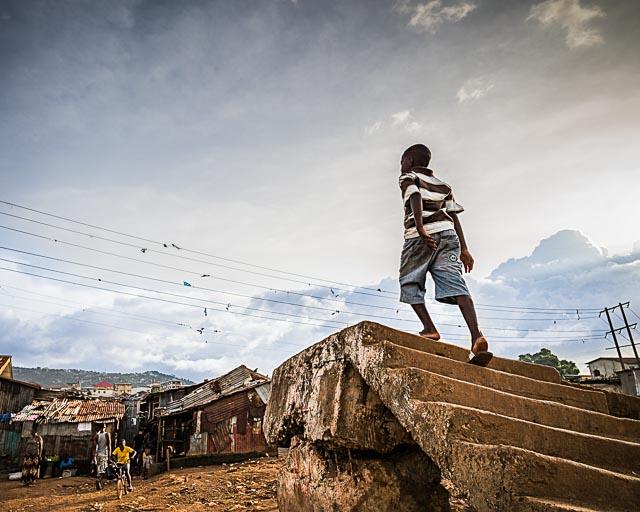Photojournalism has the power to raise awareness for otherwise forgotten stories, according to photojournalist Sara May at an opening of her exhibit detailing the aftermath of the Ebola crisis in Sierra Leone at the Washington, D.C. Leica Store on Friday.
Titled “After the Crisis,” the exhibit features photos from May’s travels to Sierra Leone and offers an intimate look into everyday life, documenting the struggle of the human subjects as they adapt to life without the loved ones they lost to Ebola.
May’s career as a humanitarian photojournalist came about as a result of her experience as an internationally deployed emergency relief physician. While serving in impoverished areas, May said she quickly realized that storytelling through photojournalism has a far-reaching effect that would outlast her relief work.
“It became evident to me that, you know, there is an amount of good you can do as a physician,” May said. “You provide someone care, but then it doesn’t really go much beyond that as far as raising awareness internationally about the narrative that needs attention. I wanted to be able to have a little bit more of a reach with my work.”
May emphasized the importance of gaining the trust of her subjects and establishing positive relationships early on with small nonprofits in the area.
“If you have the benefit of working with a local nonprofit group, you have a win-win situation,” May said. “You’re giving them the benefit of being able to use your images in media for their publicity efforts, but you’re also telling a story that’s much bigger than the nonprofit by getting access to those populations that they serve and telling those stories.”
She also commented on the difficulty of living and working in a country like Sierra Leone that has limited infrastructure and a physically demanding climate. To prepare for her day, May would wake up early to drink two liters of water before she went outside in 100-degree heat.

Entitled “After the Crisis,” photojournalist Sara May’s exhibit features photos from her travels to Sierra Leone and offers an intimate look into everyday life, documenting the struggle of the human subjects as they adapt to life without the loved ones they lost to Ebola.
“You’ve got to be able to accept the fact that there’s going to be some risk involved. Public transportation, roads and bridges were not at all guaranteed to be intact. So there’s a certain amount of risk that you just have to be okay with taking,” May said. “You have to just be willing to submit to the conditions.”
According to May, she tried to strike a balance of being both well-informed about her subjects and also willing to learn and be surprised by them.
“The most important part of all of it is not having any expectations going into your shooting situation, not having any preconceived ideas about the story that you’re going to be recording,” May said. “If you come into it with too many expectations or too strong an idea of the story you want to tell, you’re going to actually miss the real story.”
Olivia Weise, gallery coordinator for Leica Store D.C., said the store was interested in displaying May’s work because it reflects the company’s heritage and mission.
“Leica has a rich history and so do journalism, documentary photography and reportage. I think this show really speaks to that,” Weise said. “There is something about the process of using a Leica camera that makes the photographer really tuned into what they’re doing, because the camera becomes an extension of themselves.”
The proceeds from May’s print sales will benefit the We Yone Child Foundation, an organization based in Sierra Leone that provides education and care to underprivileged children.
May plans to return to Sierra Leone to continue her work documenting the lives of children orphaned by Ebola, who are growing up without a stable household or guardians.
“At the moment, I’m really focused on going back to Sierra Leone and continuing the story of these few individuals that I’ve been following since Ebola,” May said. “My number one priority is to follow the trajectories of each of these kids because each story stands on its own.”














